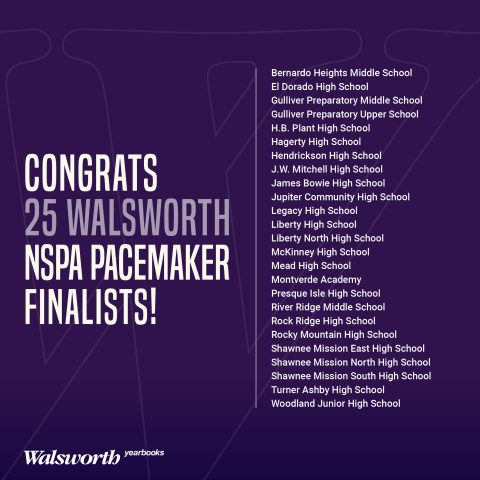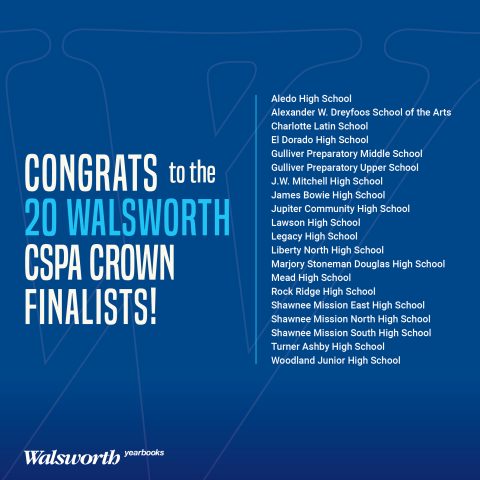Yearbooks are an integral part of any school year. However, as one of the only organizations at school whose very existence depends upon sales, keeping your program financially healthy presents a unique challenge. Keep your yearbook program in the black with these five yearbook marketing ideas.
1. Train a marketing manager
Who knows how to sell to students better than one of their peers? This isn’t an option for every staff, but if you have the people and resources to spare, do it! A marketing manager can focus all of their energy on the business and selling side of yearbook, freeing up the rest of the staff to focus on creating a great yearbook.
A well-trained marketing manager can run social media campaigns. They can have fun with selling yearbooks and yearbook ads – like setting up tables at school events, brainstorming new ideas to sell and finding the best ways to communicate with potential buyers. They can do outreach in the community, expanding your opportunities beyond school walls. They can also organize coupon codes, gift certificates and pricing structures.
Best of all, they can talk to students. A good marketing manager should be able to communicate to students and parents about why they’ll want a yearbook and a yearbook ad.
2. Be inclusive
Get students and parents involved with the Yearbook Snap app. Everyone wins. It’s easy for your school community to upload photos, the staff will have more options to use in the yearbook and students and community members will have the chance to see their photo credits in the yearbook!
Tell students when they’re in the yearbook. There’s no bigger disappointment than realizing you weren’t pictured. Make sure you’re getting every student in the book. At least twice is the minimum for many yearbook programs, but maybe your school can do more. When a student is pictured, leave a note on their locker telling them what page they’re on!
Find ways to appeal to the students who wouldn’t traditionally buy a yearbook. Do a focus group with people you know haven’t purchased a yearbook before. Ask them why – but avoid judgment. Just listening with an open mind is important. Try to do this focus group during lunch or immediately after school. Order food so there’s incentive to participate. Once you’ve listened, ask what you can do to encourage them to buy. Some students may say, “Nothing.” Even though that’s hard to hear, respect their opinion. Hopefully you’ll get feedback that may help you in the future! Another option is creating a survey after the book comes out to get input for next year if your students feel more open answering anonymously than in a focus group.
3. Sell where they least expect it
Football games? There’s an opportunity to sell more yearbooks. The school play? Of course you can sell yearbooks! Homecoming parade float? Use it to get their attention!
Kathy Beers, yearbook adviser at Timber Creek High School in Fort Worth, Texas, is known as something of a yearbook marketing genius (if you don’t believe me, just listen to her interview on season one of the Ask Mike podcast). The staff of The Creek starts their marketing as soon as the previous yearbook is complete.
“Our goal each year is to just sell more than last year,” Beers said. “We start in the summer, and we keep our ear out for new ideas.”
They push the idea of “completing your collection,” to reinforce that students will want more than just their senior yearbook. They hang small fliers on every exterior door in their building. They also catch students’ eyes with giant banners that read, “XX Days Left to Buy a Yearbook.” They’ll count it down – but only leave the banners up for 10 or so days.
“We want to keep it fresh, so people are never bored of seeing our advertisements,” Beers said.
The Creek staff posts lists of who has already purchased a yearbook. Every time they refresh the list, they print it on a new color and post it on a different wall so people keep reading.
Fall football games offer an opportunity to market yearbook in a slightly surreptitious – but very useful – way
“At the first football game of every year, we hand out fans,” Beers said. “Parents have grown to love them. And I love when I look around the stands and I see people with fans from previous years. That tells me they held onto them!”
One side of the poster board fan features the school logo and football schedule. The back shows off yearbook photos from the previous year, due dates and prices for yearbook senior ads, yearbook order dates and prices, and the website where they can buy.
4. Don’t overlook parents
“Our market is teenagers and their moms,” Beers said. “The teenagers have to want it, but the moms are the ones who have to buy it.”
Timber Creek markets to parents through Facebook. It’s a free way to reach buyers. The yearbook program is on their local neighborhood page and posts regularly, which is in turn seen by the parents. They utilize the groups parents create, like the senior class parents group. Each post includes a visual element, dates, times, costs and encourages people to share the post. School parents are especially good about sharing and reposting to different groups.
They’re helping us. They’re providing a service for their neighbors and friends,” Beers said. “And they advertise for us.”
One of the easiest ways to market directly to parents is through Walsworth’s Parent Email Program (PEP). If your school already sells online (which you should definitely be doing) through Walsworth’s School Store, all you need to do is sign up and send over a list of parent email addresses!
“We see improved sales from PEP in a few different ways,” Walsworth Senior Marketing Specialist Aimee Parsons said. “There’s an initial bump in sales within the first seven days after an email send. We also see a cumulative sales growth at schools that have used PEP for several years. Most importantly, PEP helps increase the awareness of yearbook sales within the school community. It helps remind parents to purchase and trains them for future years.”
You aren’t limited to digital means. Set up a table where you know parents will be, like at parent teacher conferences. The same goes for homecoming games – capitalize on the nostalgia!

Posting yearbook signs in front of the building, where parents will see them while waiting in the pickup line, serves as an everyday reminder. If they’re waiting for the bell to ring, parents may even go ahead and order if they can clearly see the website link.
5. Make students regret not buying a yearbook
Yearbook FOMO is a real thing – or it should be. The best way to create yearbook FOMO (fear of missing out) is by creating a great yearbook. Good coverage that’s inclusive (see number two) with interesting stories makes people want their own copy. If you establish a reputation for quality work and improve year after year, it will be that much easier to sell your yearbook.
A solid foundation forms the base, but add pizazz with fun extras, like hot foils, thermochromic ink and laser cutouts. Sherwood High School, in Sandy Spring, Maryland, used thermochromic ink on their 2018 yearbook cover. They brought hairdryers to distribution day to show how the ink changes color when exposed to heat. Student reactions were priceless.
Brag about yourself. If you’re an award-winning yearbook program, let your school know – and explain what that means and why it’s a big deal. You can hang a banner or have it read in the morning announcements. The rest of your school may not realize how good you are. So tell them!
You can find more marketing ideas and resources at walsworthyearbooks.com/marketing.





